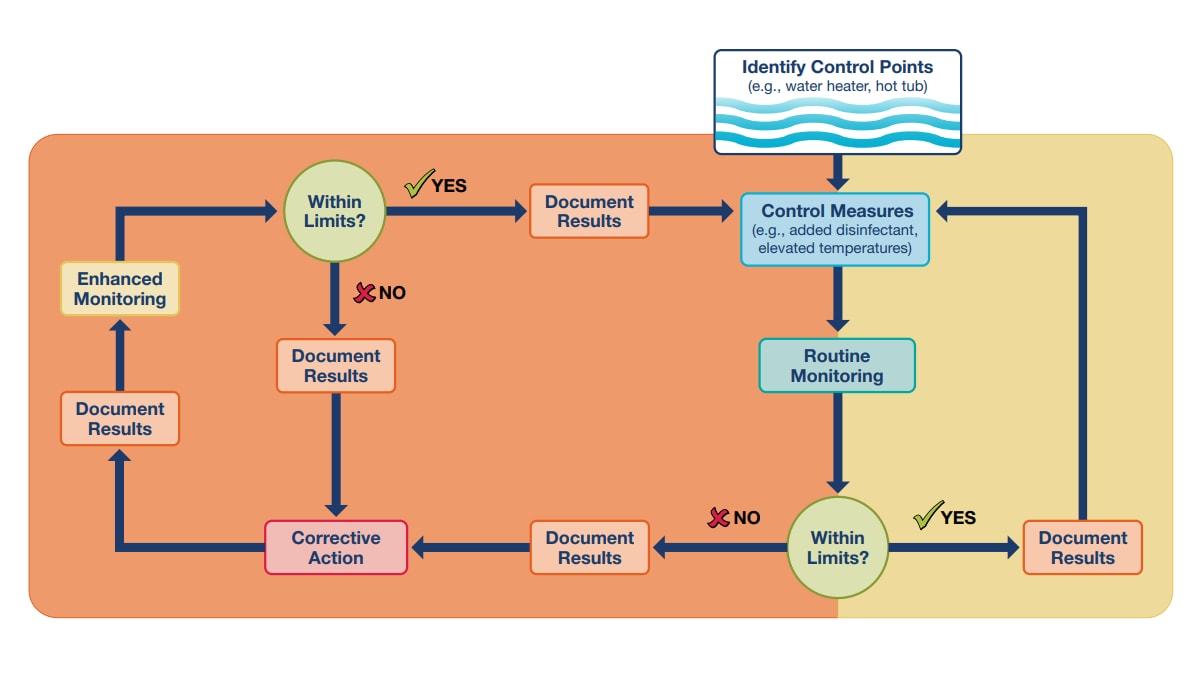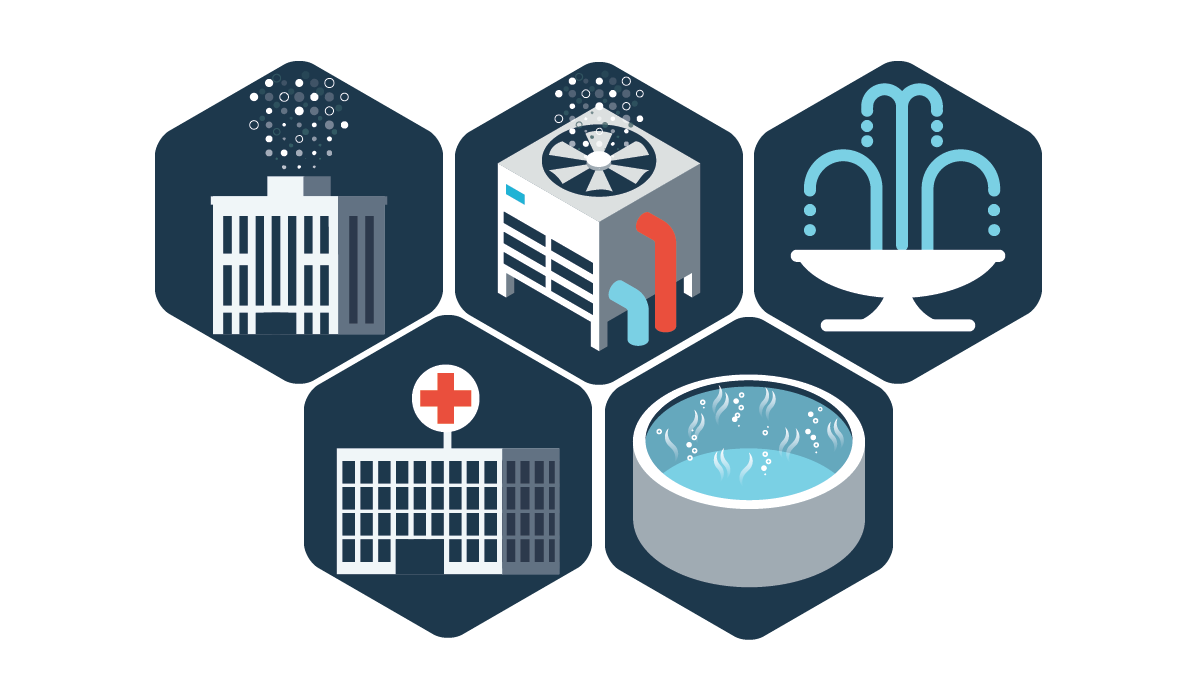Key points
- Many buildings need a water management program (WMP) for their building water system or specific devices.
- WMPs identify hazardous conditions and outline steps to minimize the health impact of waterborne pathogens.
- Developing and maintaining a WMP is a multi-step process that requires continuous review.

Overview
This site focuses on WMPs aimed at minimizing the growth and transmission of Legionella, the cause of Legionnaires' disease.
A consultant with Legionella-specific environmental expertise may sometimes be helpful in implementing and operating WMPs.
Steps
Seven steps of a Legionella WMP are to:
- Establish a WMP team
- Describe the building water systems
- Identify areas where Legionella could grow and spread
- Decide where to apply and how to monitor control measures
- Establish interventions when control limits aren't met
- Ensure the program runs as designed and is effective
- Document and communicate all the activities
Principles
In general, the principles of effective water management include:
- Ensuring adequate disinfection
- Maintaining devices to prevent
- Sediment
- Scale
- Corrosion
- Biofilm
- Sediment
- Maintaining water temperatures to limit Legionella growth
- Preventing water stagnation
Sediment, scale, corrosion, and biofilm provide a habitat and nutrients for Legionella.
Once established, WMPs require regular monitoring of key areas for potentially hazardous conditions. The programs use predetermined responses to respond when control measures aren't met.
Building factors
Each program has to be tailored for each particular building at a particular point in time.
Building factors to take into consideration include:
- Age
- Location and surrounding conditions
- Structure and size
- Water system components
- Unique areas of risk for Legionella growth and spread
- Who will be using the building
Options may vary depending upon:
- Healthcare accreditation and survey requirements
- Public health reporting requirements
- State and local building codes
- Water treatment regulations
For example, anti-scald regulations may limit maximum allowable water temperatures.

WMPs can cover entire buildings
In some settings, the entire building needs a WMP:
- Hospitals and long-term care facilities
- Buildings that house or serve a vulnerable population
- Large buildings and those with complex water systems
WMPs can cover specific devices
In other settings, such as small buildings with simple water systems, only devices that aerosolize water may need a WMP:
- Cooling towers
- Decorative fountains
- Hot tubs
- Respiratory equipment intended for nebulization
Is your building or device a Legionella risk?
Buildings and devices at increased risk for Legionella growth and spread should have a WMP according to industry standards.
Resources
Impact report: Waterborne disease in the United States
Infographic: How Legionella affects building water systems and people
Toolkit: Developing a water management program to reduce Legionella growth and spread in buildings
Training: Preventing Legionnaires' disease: A training on Legionella water management programs
Key findings: Outbreaks and water management gaps
Article: Water management programs are key to managing Legionella growth and spread
